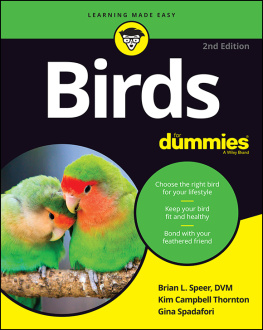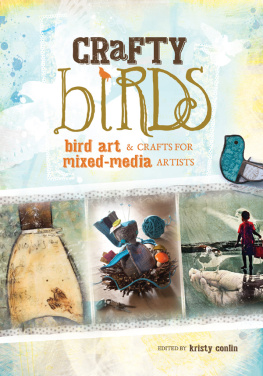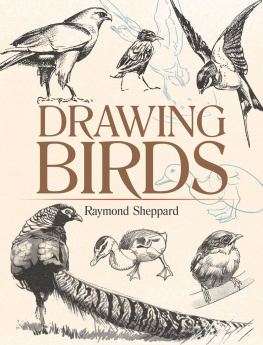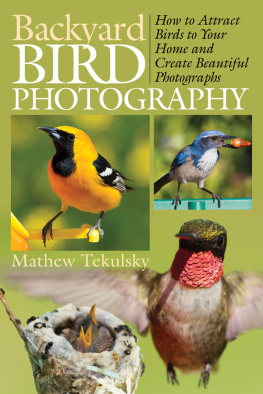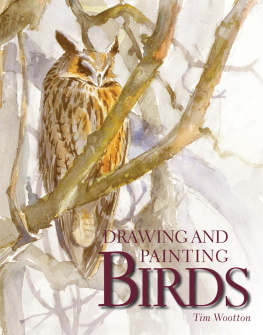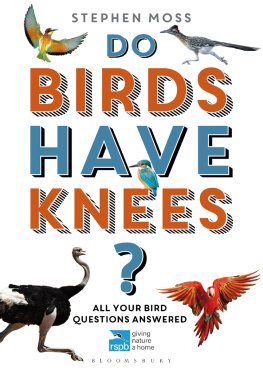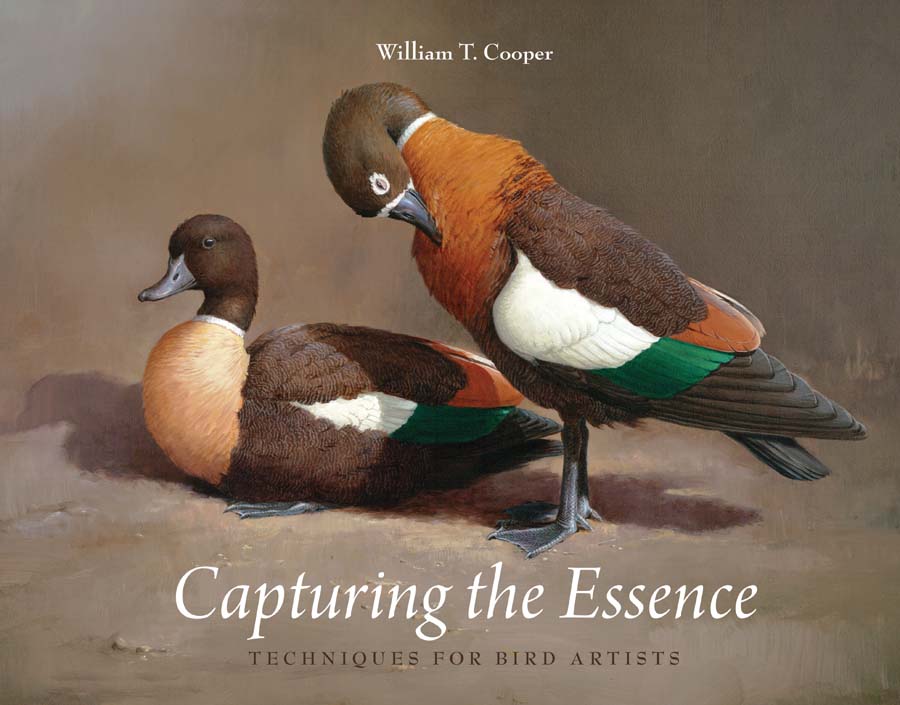William T. Cooper
Capturing the Essence
TECHNIQUES FOR BIRD ARTISTS

William T. Cooper 2011
All rights reserved. Except under the conditions described in the Australian Copyright Act 1968 and subsequent amendments, no part of this publication may be reproduced, stored in a retrieval system or transmitted in any form or by any means, electronic, mechanical, photocopying, recording, duplicating or otherwise, without the prior permission of the copyright owner.
Contact CSIRO PUBLISHING for all permission requests.
National Library of Australia Cataloguing-in-Publication entry
Cooper, William T. (William Thomas), 1934
Capturing the essence : techniques for bird artists / by William T. Cooper.
9780643101562 (hbk.)
9780643103382 (epdf)
9780643103399 (epub)
Includes bibliographical references.
Birds in art.
Painting Technique.
743.68
Published exclusively in Australia and New Zealand by
CSIRO PUBLISHING
150 Oxford Street (PO Box 1139)
Collingwood VIC 3066
Australia
Telephone: +61 3 9662 7666
Local call: 1300 788 000 (Australia only)
Fax: +61 3 9662 7555
Email:
Web site: www.publish.csiro.au
Published exclusively in the rest of the world by
Yale University Press, with ISBN 978-0-300-17626-1
Library of Congress Control Number: 2011922767
Front cover: Australian Shelducks, Tadorna tadornoides
Back cover: Australian Wood Ducks, Chenonetta jubata
Set in Adobe Arno Pro 11/14 and Bernhard Modern
Edited by Peter Storer Editorial Services
Cover and text design by Andrew Weatherill
Typeset by Andrew Weatherill
Printed in China by 1010 Printing International Limited
CSIRO PUBLISHING publishes and distributes scientific, technical and health science books, magazines and journals from Australia to a worldwide audience and conducts these activities autonomously from the research activities of the Commonwealth Scientific and Industrial Research Organisation (CSIRO).
The views expressed in this publication are those of the author(s) and do not necessarily represent those of, and should not be attributed to, the publisher or CSIRO.
Original print edition:
The paper this book is printed on is in accordance with the rules of the Forest Stewardship Council. The FSC promotes environmentally responsible, socially beneficial and economically viable management of the worlds forests.

Contents

Acknowledgements
From memory, it was a fellow bird artist Peter Marsack who first suggested and encouraged me to write this book. I am so glad he did, because it was an interesting and enjoyable project. I hope the book lives up to his expectations.
As the manuscript neared completion, the first drafts were sent to friends for criticism and suggestions. All contributed and most, if not all, of their comments were incorporated into the final text. I am greatly appreciative of their ideas and the time they have given to the project. The order of their names is alphabetic and is in no way a reflection of their contribution. They are Ben and Joan Bentrupperbaumer, Marilyn and Peter Chapman, Graham Harrington, Michel Kibby, David Mackay, Peter Marsack, Hugh Nicholson, Nan Nicholson and Penny Olsen.
Greg Scott, the owner of the Raggiana Bird of Paradise painting, kindly agreed for me to use it as the demonstration piece for the Painting in oils chapter.
I am most grateful to my wife Wendy who, apart from many useful suggestions, diligently typed the manuscript and scanned all of the artwork. I thank her for all her help and encouragement through a process that took much longer than was expected.
Thanks to John Manger for considering the work worthy of publication.

Introduction
Drawing and painting birds has taken up a great part of my life and has been most rewarding in many ways. In this book, I hope to be able to help the reader become competent at drawing and painting birds, or at least to enjoy trying. For those who have no desire to draw or paint, but have an interest in the procedure, hopefully these pages will provide an insight into an artists world. Although this book is biased towards birds of the Australian region, the principles involved remain the same no matter where in the world you are drawing or painting. You may already be a competent artist in another field, in which case you are more than halfway to becoming a bird artist.
Painting or drawing any subject well gives great satisfaction. It is difficult to explain the pleasure derived from finishing a piece that you consider successful, and then walking into the studio a few days later, having not seen it since the last brushstroke, and seeing it anew. On the other hand, sometimes that is when you see for the first time many of the bad points of which you were unaware when you were working on the piece.
By covering a finished work for a few days and then looking at it with a fresh eye, you will know whether it has been a success or not. Painting is full of highs and lows and always reminds me of the title of the film about Michelangelo painting the ceiling of the Sistine Chapel The Agony and the Ecstasy. Talking with other artists, I often find that they similarly experience the highs and lows that come with serious painting, although perhaps not to the extent of agony and ecstasy.
When I was young, even before my teenage years, I would sit for hours enjoying the work of John Goulds artists particularly Joseph Wolf as well as the early American bird artist John James Audubon. Looking closely at these pictures gave me a real feeling of being very close to the bird and of seeing all the details that I could not see on birds in the wild. It was like holding the bird in my hand, and thus started my great desire to be able to draw and paint birds.
Apart from the joy of producing a good lifelike painting of a bird, much excitement is to be had in finding, watching and learning about birds in the wild. Seeing wild creatures going about their lives unaware of, or undisturbed by, your presence can be a very enjoyable experience.
There are of course many methods and styles of painting, and I stress here that what I describe is only my way of painting birds. There is no single correct way to go about this and hopefully you will develop your own style by adding to whatever you learn from these pages, through lots of practice, and by studying the paintings of other artists. Accomplished bird art can be achieved by using many different approaches. Extreme detail does not necessarily make a good painting. Many people are greatly impressed by fine detail and fail to see bad drawing, composition and structural errors or lack of likeness to the subject. On the other hand, the broad impressionist method can only make a good picture if it has good composition and is true to the bird. The same applies to all styles in between. Be faithful to your subject regardless of whether you are using watercolours with a No. 1 Sable brush or oils with a No. 10 Hog Bristle brush.



